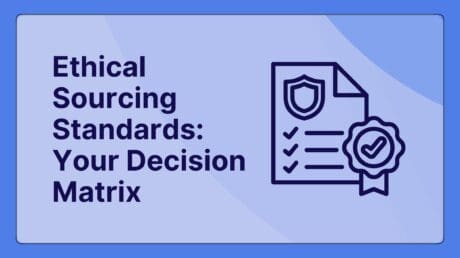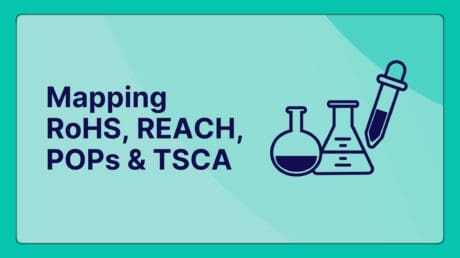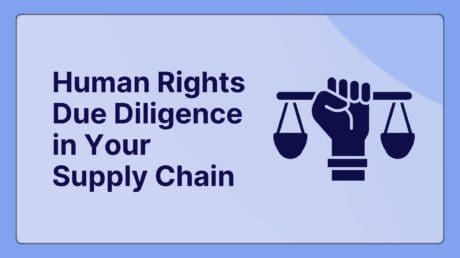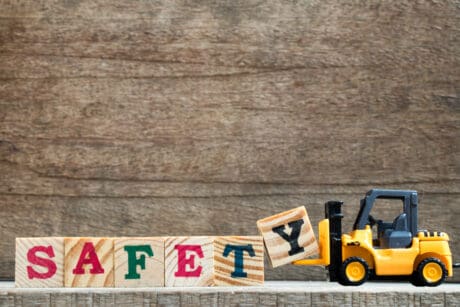
What’s Trending in Compliance? April 2025

This blog was originally posted on 22nd April, 2025. Further regulatory developments may have occurred after publication. To keep up-to-date with the latest compliance news, sign up to our newsletter.
At Compliance & Risks we help manufacturers, retailers and their supply chain partners to monitor and manage global regulations via C2P, our compliance knowledge management platform.
We break down some of the top compliance trends in April 2025 that are generating the most interest globally this month.
1. OECD: The Role of Traceability in Critical Mineral Supply Chain, Report, February 2025
In February 2025, the OECD published this report on the role of traceability in the critical mineral supply chain. As mentioned in the report, as the demand for critical minerals gradually increases, it will be important to manage the potential social and environmental risks of the mining and metals sector. If these risks are not assessed and addressed, supply for clean energy technologies might be disrupted.
Traceability systems, used as part of risk-based due diligence processes, can support the emerging policy goals by tracking mineral origin, evolution and ownership. Some traceability approaches also provide a platform for recording environmental, social and governance (ESG) impact.
This OECD report outlines an eight-step roadmap to guide in setting policy objectives, as well as building mechanisms, to ensure traceability systems are fit for purpose, practical and take into account the realities of global supply chains.
2. UK: Extended Producer Responsibility for Packaging: Register and Pay the Fee, Guidance Document, Revised, March 2025
This guidance document, issued by the UK Department for Environment, Food and Rural Affairs (DEFRA) provides information on registration and fee payment for those organizations which are obligated under extended producer responsibility (EPR) for packaging. The deadline for registration and payment is 1 April 2025. The annual registration fee is payable as follows:
- Small organization: £1,216
- Large organization: £2,620
3. EU: Implementation of Article 4 ‘Responsible Person’ Requirement of Regulation (EU) 2019/1020 on Market Surveillance and Compliance of Products, Report, March 2025
The EU Commission has issued its evaluation report on the implementation of Article 4 of Regulation (EU) 2019/1020, assessing the scope of that Article, its effects and its costs and benefits.
Article 4 introduced the concept of the responsible person (economic operator) to strengthen compliance of products placed on the market: a product subject to harmonized legislation may be placed on the market only if there is an economic operator established in the Union who is responsible for certain specific tasks as defined in Article 4(3) of the Regulation in respect of that product.
The expected benefits of Article 4 include the facilitation of corrective actions, enforceability of market surveillance authority (MSA) decisions, and a more level playing field between EU and third country producers.
The key finding in the Commission’s report is that Article 4 does not yet seem to have had a deterrent effect in terms of decreased occurrence of non-compliant products.
According to the report, MSAs have claimed that responsible persons are very difficult to identify when they are not mentioned on or with the product, and even when they are identified, it is challenging to contact them.
At the same time, the implementation of Article 4 has brought only marginal cost increases for authorities and economic operators.
The Commission observes that Article 4 non-compliance is likely to signal a risk of general non-compliance, since a product that does not comply with a clear formal rule (such as an information or marking obligation), might also be at risk of more substantial non-compliance.
As a next step, the Commission will carry out a full evaluation of Regulation (EU) 2019/1020 by 31 December 2026. That evaluation will also cover Article 4, using more data and further practical implementation experience.
4. IATA: Transport of Lithium Metal, Lithium Ion and Sodium Ion Batteries, Revised Guidance Document, 2025
This is the latest revision of the IATA Guidance Document on Transport of Lithium Metal, Lithium Ion and Sodium Ion Batteries. The guidance is based on the provisions of the 2025-2026 Edition of the ICAO Technical Instructions for the Safe Transport of Dangerous Goods by Air (Technical Instructions) and the 66th Edition (2025) of the IATA Dangerous Goods Regulations (DGR).
The provisions of the DGR with respect to lithium and sodium ion batteries may also be found in the 12 Edition of the IATA Battery Shipping Regulations (BSR). In addition, the BSR also has additional classification flowcharts and detailed examples of packing and documentation for these batteries.
The information in these guidelines is intended for guidance purposes and should not be relied upon as a source of regulatory compliance.
5. Morocco: Standards on Electromagnetic Compatibility and SAR Testing for Wearable Radio Devices, Public Consultation EP 8, March 2025
On 4 March 2025, the Moroccan Standards Institute (IMANOR) launched a public consultation informing interested parties that it intends to adopt the following draft standards, among others, related to electromagnetic compatibility:
- PNM 06.0.531 Low voltage cables with electromagnetic shielding: Requirements and test methods;
- PNM IEC TS 62153-4-1 Metallic communication cable test methods – Part 4-1: Electromagnetic compatibility (EMC) – Introduction to electromagnetic screening measurements;
- PNM IEC 62493 Assessment of lighting equipment related to human exposure to electromagnetic fields (Revised NM EN 62493:2015);
- PNM IEC 62232 Determination of RF field strength, power density and SAR in the vicinity of base stations for the purpose of evaluating human exposure (Revised NM EN 50383:2015);
- PNM IEC/IEEE 62209-1528 Measurement procedure for the assessment of specific absorption rate of human exposure to radio frequency fields from hand-held and body-worn wireless communication devices – Human models, instrumentation and procedures (Frequency range of 4 MHz to 10 GHz) (Revised NM EN 62209-1:2015 ; NM EN 62209-2:2015).
The consultation closed on 4 April 2025 and Compliance & Risks will continue monitoring for further developments.
Unlock Market Access
The top compliance trends in April 2025 is based on the most viewed regulations on C2P this month. If you would like to see C2P in action, join us for a bite-sized high-level demo to witness the true power behind C2P.
Simplify Your Product Compliance Process with C2P
Design & build new products with full confidence you’ve met all compliance obligations.








